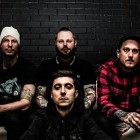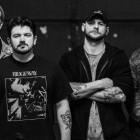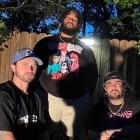
To say that the Macondo was an important place to me would be an understatement. For a 4-year span in the '90s, my friends and I would be there almost weekly, either playing shows or just checking out bands. It was about so much more than just music. I was exposed to different ways of thinking, art, political ideas, but most of all I was welcomed like family.
I met Raymundo Reynoso at the first show at Macondo back in ’92, and we have been friends ever since. His perspective on the hardcore scene is very refreshing, and the DIY ethic is still evident in everything he does from his art and artshow curation, to his printmaking, self-published ‘zines and books.
Where did you grow up, and what was your first exposure to hardcore?
I was born in Mexico City and moved to Los Angeles at the age of 6. Once in LA, my family moved around quite a bit. We started off on the corner of Virgil and Normal in what is now called “Virgil Village,” moved further south to Temple Street, then lived in a bunch of different apartments in the area, spanning from Silverlake to Angelino Heights through now-Historic Filipinotown and Echo Park. From there, we jumped northeast to Atwater Village and ended up in Glendale my last year of high school.
My dad is a big record collector and he would take me with him to record shops like Aarons and Rene’s All Ears on Melrose in Hollywood. The punk and hardcore record covers, flyers, and spray-painted band names on the streets always caught my eye. My dad gave me the Dead Boys’ Young, Loud, and Snotty, some Clash records, and the Ramones. One of his friends played me the Dead Kennedy’s Holiday In Cambodia 7” one day at his place, and I was hooked.
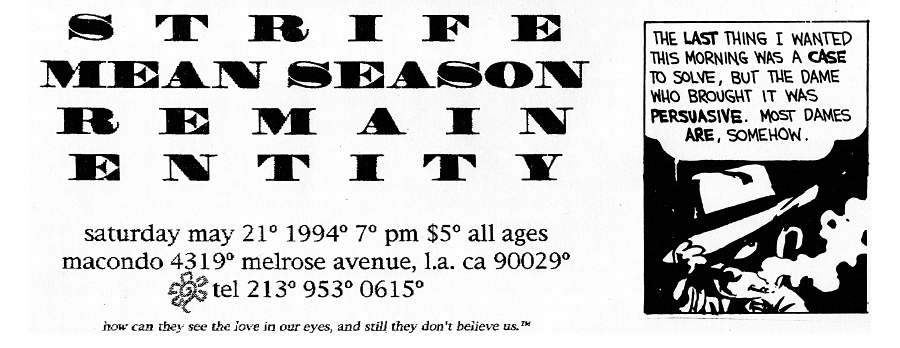
I had a super metal friend in elementary and junior high school that introduced me to Napalm Death, Celtic Frost, Venom, Excel, and all that stuff, but most of it didn’t really stick with me too much. I’d already gotten into Dungeons & Dragon and a lot of the stuff he played sounded equally as fantastical and nonsensical to me, save perhaps for some of the social/political commentary growled here and there.
I did not grow up religious at all, so all of the stuff the darker metal bands wrote about just sounded like Christian myths to me. The art and band logos seemed cool, but again, I was used to seeing those type of images. Pushead’s artwork in that world had more of an impact on me than most of the music, Rev’s from Excel as well.

I already liked Minor Threat, their sound, and their message, but along with 7 Seconds, I thought of them as just punk bands. In high school, I met this kid named Rigo by asking what the giant "AZHC" with an X meant on his sweatshirt, and he proceeded to school me on straight edge hardcore and how it was a whole movement. I already agreed with most of the ideas behind those lyrics, and I liked the graphics I saw on records, shirts, and stickers, so when he gave me a tape with Uniform Choice on it, that was it!

What were some of the earliest shows that you went to, and what were some of the venues that you were frequenting?
My parents used to sneak me into concerts as a kid, mostly protest/Nueva Canción/political stuff in Mexico City. Here in LA, the first more or less mainstream rock show I went to was Siouxsie and the Banshees at the Universal Amphitheatre, but before that, my Grandma randomly took me to Sonic Youth at L.A.C.E. in downtown L.A.
The first friends I made when I moved to Atwater were all into different types of music and we rolled to some of our first hardcore shows together. I convinced my dad to take us to the Country Club in Reseda the first time we went, and I think my homies Oscar and Carlos got their moms to drop us off there as well for a few shows, and that quickly became my favorite spot.
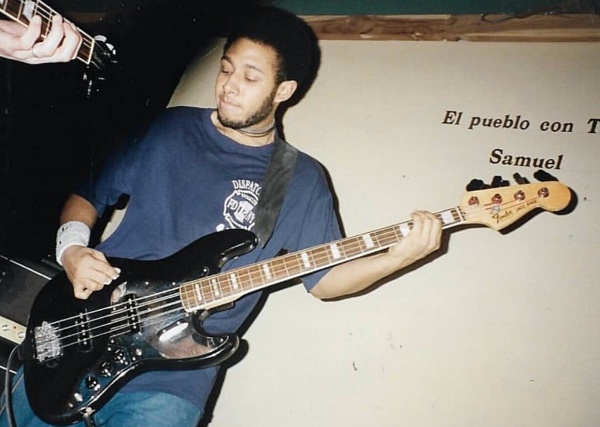
When we got to high school, another friend of ours, Raymond, eventually commandeered a car from his parents. We also met two other awesome dudes, Dirk Yoshida (RIP) and Heric, who both put us on to other spots and shows. Dirk drove us to shows as well. I remember us getting lost in the middle of the oil refineries in Long Beach trying to find Fenders (we finally did!) A few of us got kicked out of the Anti-Club for being underage, which made all-ages hardcore shows all the more rad to me.
At the Country Club we saw some of the bands I still list amongst my favorites: Social Justice, Insted, Gorilla Biscuits, No for An Answer, Reason to Believe, Uniform Choice, Fugazi, Beat Happening, Carry Nation, I definitely slant towards the SoCal spectrum of hardcore, but also got to see BOLD, Vision, Slapshot, and Killing Time.

I definitely missed some rad shows not having easy access to a car, there not being an easy way to get to some spots like Spanky’s, the Pickle Patch, or Cell 63 on the bus from LA, or not convincing one of our parents to make those treks, but I still got to see some awesome bands.
Later on, as we got older and some of us got access to cars, we started heading out to shows at the Showcase Theatre in Corona, the Icehouse in Fullerton, Chain Reaction in Anaheim, and as far down as the Che Café in San Diego.

Let’s talk about the early history of Macondo… It was originally a non-profit cultural center run by your parents, right?
It was always a non-profit cultural center. When my parents first started it, the mission was to provide a space for the arts of the Americas, the immigrant communities in LA, and grassroots artistic manifestations in general, particularly from underrepresented communities.
I never really saw it as venue per se; I guess to use a term being (overly) used today, I’d call it more of a DIY space. Hardcore in all its variants fit with Macondo’s mission and message well, so the shows were an integral continuation of the activities at Macondo.

What was the first show you guys booked, and did you have any problems convincing your parents to hold hardcore shows in their venue?
The first show we tried to have actually did not happen. Oscar worked on putting it together but for some reason it did not go on. So the first show that actually did happen was technically the second show organized. The line-up for that show was Outright, Interlocked, Social Justice, and Strife, and it went down on Saturday, June 13, 1992, put together by Heric from Patchwork Fanzine. Heric was down with Macondo and saw hardcore shows as a supportive element to keep the space open. We actually always ran on donations, so hardcore shows definitely contributed greatly to our existence.

We had zero problems getting my parents on board with having shows. They were and still are 100% supportive. They are both into all kinds of music, were stoked my friends and I were involved with straight edge and graffiti, and saw it as a natural fit with everything else we were doing.
The seeds of Macondo come from an indie music distro called PROCURE – Promociones Culturales Reencuentro – that my parents ran out of my Grandma’s garage in Atwater in the early mid-'80s, so they also were hyped on the fact the hardcore scene very much shared that ethos and approach to music.

Macondo was a very important venue for many reasons… You guys started booking shows right as many of the other larger or known venues in the area started to close. Venues like The Whisky, and The Roxy, and other Hollywood venues were not interested in booking hardcore… Was this intentional? Or was it more of being at the right place at the right time?
I’d say Macondo was mostly unrelated to the things happening (or not happening) at the Hollywood venues. The Macondo crew was into a bunch of different music, so for sure we would go see bands such as Ride, Lush, Pharcyde, The Skatellites, and many others at those spots, but to me they formed part of a more - for lack of a better word - “mainstream” part of the music scene.
To me, Hollywood represented the commodification of music. That world seemed more about contracts, alcohol, age restrictions, sexism, and all of those corporate rock and roll clichés. For me, hardcore was not that. Those venues were notorious for quite often ripping off bands with pay-to-play schemes, drink purchase minimums, cuts of their merch sales, and straight-up discrimination against some bands and their audiences.
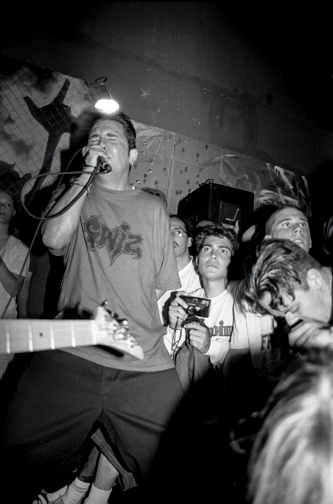
Although Macondo was never going to make any band rich, we always strived to be upfront and as egalitarian as possible. We wanted to keep an autonomous space that felt like home and made us, the people going, and the bands playing feel like we were all in this together.
Around the time Nirvana signed to their corporate record label, and Green Day soon after them, there was a noticeable turning point in which the Hollywood music industry started trying to swoop in on what we were doing at Macondo. We would get the random A&R person, label exec, promoter, talent scout, reporters for mainstream media, etc. popping in. They didn’t know what to do with us! At one point we instituted a “You pay double!” if you name drop any sort of corporate music world affiliation at the door trying to get in for free.
Because of this shift, I made it a point to turn down “secret” major-label band shows, features in press like the LA Weekly and the LA Times, offers to film music videos at our spot, and other weird things the corporate music world liked to do at the time. It might have been the wrong call, but the memories and experiences people have of Macondo mean much more to me than some misguided mainstream attention would have brought back then.

Also, on a more practical level, we were completely “underground” in the sense of having no permits, no stated occupancy capacity, no insurance, and all of those things the clubs had. We tried to have trust in each other, the audience, and the bands that things would mostly go right. We did get a few visits by the cops and the fire marshals, but they would give us a pass when they incredulously could not find us selling alcohol and we showed our official non-profit status.
Having daytime shows also threw them for a loop, as did the times they asked for a dance permit yet no one was actually dancing, just emo’ing in place! The last thing we wanted or needed was to have some mainstream media outlet declare us “cool” and have us overrun by people who didn’t understand the spot and the culture and get us closed down.
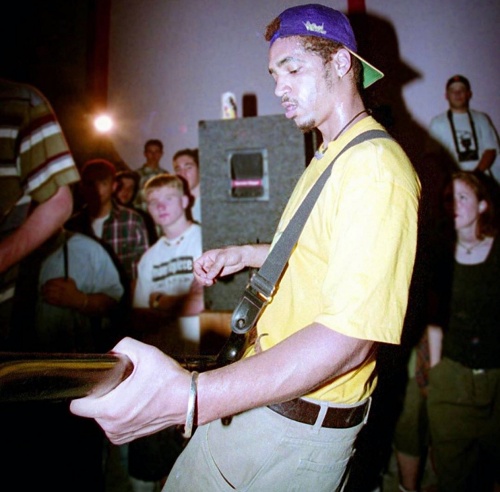
Another important thing about Macondo was the diversity of the shows… You had all types of bands from Strife, Born Against, Atoxxxico, Sensefield, Bikini Kill, Still Life, Farside, Samiam, Unbroken, Los Crudos, and more. There were a few different people that were booking the shows, what did each of them bring to the table?
I think the diversity primarily emerged from and was a response to Macondo’s mission. We aimed to have an open space for a myriad of artistic and musical expressions. The volunteer “staff” also had super diverse interests and we wanted to reflect that. The people most active in organizing shows – Oscar Cruz, Heric Dueñas, Mark Rodgers (RIP), Raquel Gutierrez - brought a lot of knowledge, experience, and interests. We also collaborated on some shows with KXLU via DJ Hoseh – probably the only LA college radio station that gave hardcore any play besides Rodney on the Roq’s late night show on KROQ.
At some point in our run, there were a couple of booking agents that would pitch us shows, Stormy from Leave Home and Margie from Do It Booking. They primarily promoted bands we already were into, so we were semi-comfortable with going that route. The bands themselves would also suggest shows, put some of them together completely, or add “secret” bands to bills they were on.

I think one of the common threads throughout all of our programming, be it hardcore or otherwise, was an independent spirit, disinterest in mainstream corporate cultural consumption and production, and the desire to make the world at a better place. (Later on I learned of at least one band that played who’s singer had founded a very vocal right-wing conservative punk blog, which I find contradictory, but that’s just me.) Overall, I think progressive values were the norm amongst bands who played at Macondo.
We did also have a band whose singer was responsible for the first act of violence at our otherwise non-violent space, which leads me to your next question…

I have some very vivid memories of many shows at Macondo and wanted to ask you your memories about some of these shows…
The Bikini Kill show at Macondo is pretty infamous, even to this day, and a clip of that show was in their documentary… Do you remember what went down that night?
Honestly, I’ve tried to block that whole show out of my mind, as it was a bit traumatic. Macondo was founded with the idea that it would be a safe space for positive cultural and artistic expressions, and that day kind of snapped me out of that idealism.
Long story short, the singer smacked one of the photographers who consistently documented our shows. Macondo did not have the means or resources as an organization to consistently document our activities, so I always thought it was awesome that other people were able to cover that aspect and put in the work to do it. I saw the archiving of our scene as a collective effort (which for this interview has proven to be an invaluable resource, by the way.)

During one of their songs, I noticed the singer sort of pointing out and gesturing at this one photographer in particular, who was looking through the lens. As he looked up from the viewfinder, the singer hit him!
I’ve read statements that their singer felt the photographer should not have been taking photos of their performance, which motivated the lashing out, and that everyone else in the audience doing so had explicit or implicit permission to film and photograph. None of the Macondo staff of volunteers were ever made aware before or after the fact that the band had specific requirements in regards to the recording of their show; if we had, it probably could have been addressed up front and maybe the whole situation could have been averted.
I saw Atoxxxico play there, and while I was not familiar with the band at that time, I knew that I was witnessing something special… Do you have any memories from this show?
This show was put together by Heric. I was super excited because I had heard of them in Mexico City at legendary underground culture swap-meet El Chopo, and getting to see them live at our spot was amazing. At that time, I was writing for a few zines covering the then-called “Rock En Español” scene and was getting bummed at what I perceived to be super-lazy attempts at replicating the corporate english rock world.
Seeing a band like Atoxxxico that represented the DIY spirit and social and political ideals that I vibed with making music in my native language was very inspirational. I just found out that their singer at the time, Alex Mosh, actually went to my high school!

We had a semi-consistent volunteer named James aka James the Punker who at one point during the show was somehow moshing around a smoking flag on the ground. (I say “smoking” because I think whoever tried to burn it couldn’t set it completely on fire.) Lots of cool things collided at that show.

I remember Born Against playing a show there and Sam McPheeters crapped his pants on stage… Do you have any memory of that?
I do not remember this at all, although I have been asked about it more than a few times! The shows were usually pretty dank to be honest, so maybe I just didn’t notice anything out of the ordinary.
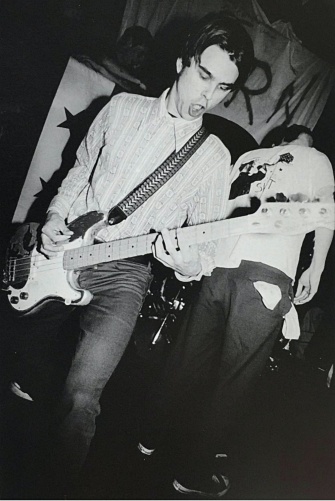
A few years ago there was a guy that was writing a book on the band Chokehold. He wrote me asking to do an interview for the book and he specifically wanted to talk about the night that Chokehold played Macondo. I didn’t have a memory of them playing, but the author said the band accused me of sneaking on stage while the were playing and unplugging them during their set.
Because of the way the stage was set up, I knew it was not possible to get on to the stage without someone in the band seeing me… I asked you about that night and you did some deep forensic work to find out more info. Do you remember your conclusion?
According to the notes I kept back then, Chokehold played with Snapcase, Lifetime, and Remain on August 11, 1994.
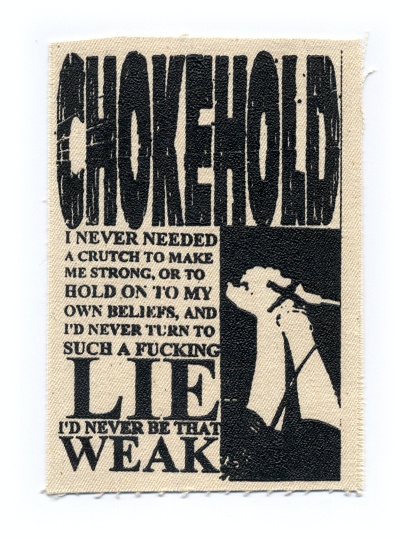
To make a long story short, pun intended, the electrical set-up in the building was very questionable. Add to that the fact the squatting ravers next door were tapping directly into our main cables and that some bands had begun plugging in arena-level amps and equipment, the load was often too much for our breakers to take. We had a legit Pasquini espresso machine and grinder which would also trigger the circuit breakers if used while bands were plugged in going full force.
This was before espresso was a big thing, especially in the hardcore scene, so what amazes me is that someone asked for an espresso drink while Chokehold was playing, causing the power to blow. This also happened to other bands, Snapcase and Strife for sure (watch in the video below) So if there is any actual blame to be assigned, it would be to our building’s owner for keeping our electricity substandard and to whoever it was that ordered fancy coffee at a hardcore show!
What was your favorite show at Macondo and why?
I can’t single out one show as my favorite, but the first show we had was definitely one of the most significant experiences in my life. Social Justice is one of my all-time favorite bands, and having them play at our spot was mind blowing. Meeting the guys in Strife and Outright was rad too, and I keep in touch with many of them to this day. Dan from Outright, Consequence, Eyelid, etc. became a friend and volunteer at Macondo from the start.
Dan eventually brought another awesome homie to Macondo, Adam, who immediately became an integral part of the crew. I made life-long friends at that show. I also started linking up with other graffiti writers in hardcore. Heric and Interlocked also were down with us from the get-go, and Heric was instrumental in keeping the ball rolling that sustained Macondo for years!

Since then, I’ve been able to collaborate with people I met that day on different levels: curating an art tour that included work by Rick Rodney from Strife and Don from Social Justice; exhibiting and organizing art shows at your spot Tradition in Westlake Village; designing some graphics and records for Strife, including Witness a Rebirth and some limited-edition reissues of your first single released at different hardcore fests.
What are some of your favorite memories from this time?
The Macondo experience overall was very formative. Being able to work on a project with my family – my parents Raymundo and Paula, my sisters Julie and Paola, my Grandma – is one of the foundations that has sustained me in my endeavours ever since.
Macondo and everything that went on there made me serious about graphic design, zines and self-publishing, art as a tool for social change, cultural archiving, oral histories, doing it yourself, seizing the means of production, by any means necessary. These are lessons that have led me to be who and where I am today.
Do you have any regrets from running the Macondo? Any band you wished would have played? Or maybe a show that was booked that ended up getting cancelled?
I don’t have many regrets about running Macondo overall, but there are a few things that I sometimes think about. I always felt bad when we would hear about someone’s equipment getting jacked. I wish we would have been more consistent about documenting our shows. The Bikini Kill incident sucked.
Although Los Crudos and Texas is the Reason did end up playing at Macondo, I wish they would have played more. I remember being kind of rude to Norm from Texas is the Reason as he was trying to get them on an already-packed bill (we had like seven bands already scheduled) and I said we couldn’t add more bands. I feel bad about that.

And I vaguely remember something similar with Martín from Los Crudos; I think we weren’t able to accommodate a couple of shows with them due to Macondo’s schedule. I also always wanted to be able to have a Social Justice reunion show, although we came close having Downset play!
There was also a conversation between Mark and Fugazi trying to set something up. From what he told me, when our capacity was brought up – which to this day I don’t think we knew what it was! – it became obvious at that point that it couldn’t happen. We were too small of a spot.
Speaking for myself, I didn’t see hardcore as a business. There were a few bands that wanted to play that went on to become huge, but somehow my spidey-sense would go off and we wouldn’t follow through with having them play. I didn’t want Macondo to be a springboard or a way to get underground points for bands already on a major label path.
I’ll keep their names off the record for now [laughs].
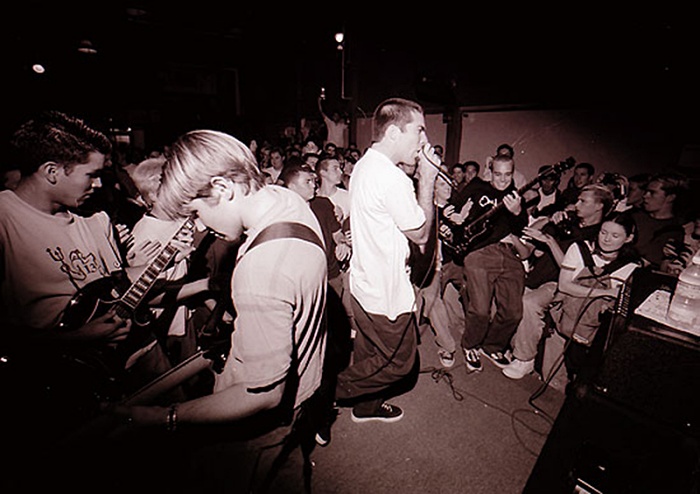
What ultimately led to Macondo closing?
There was no real last straw to speak of, I think we all saw it sort of coming. The immense effort all of us were putting forth to keep it functioning burned a lot of us out. Money was always an issue, being lucky if we just scraped by with the rent and bills. One of our staff almost got shot going across the street to get water for the bands.
Things from the business and corporate music worlds began to inevitably creep in: contracts, guarantees, technical requirements, and that sort of thing. While I understand everyone has the right to make a living, and ideally doing what they are passionate about, I wasn’t prepared or really much interested in dealing with any of that, especially from the vantage point of a small non-profit community space, nor as a fan of hardcore and independent music.
Ian MacKaye recently put it this way in describing the Dischord Records approach: “We don’t use contracts, lawyers, any of those kinds of things. We are partners – they make the music, and we make the records.” That’s how I saw Macondo.

***
Macondo archive on Instagram: @macondohardcore
Ray Macondo, aka Eyeone on Instagram: @eyeone_sh
Andrew Kline on Instagram: @andrewstrife
***
Donate a few bucks to help with No Echo's operating costs:
***
Tagged: 90s hardcore week, lifetime







